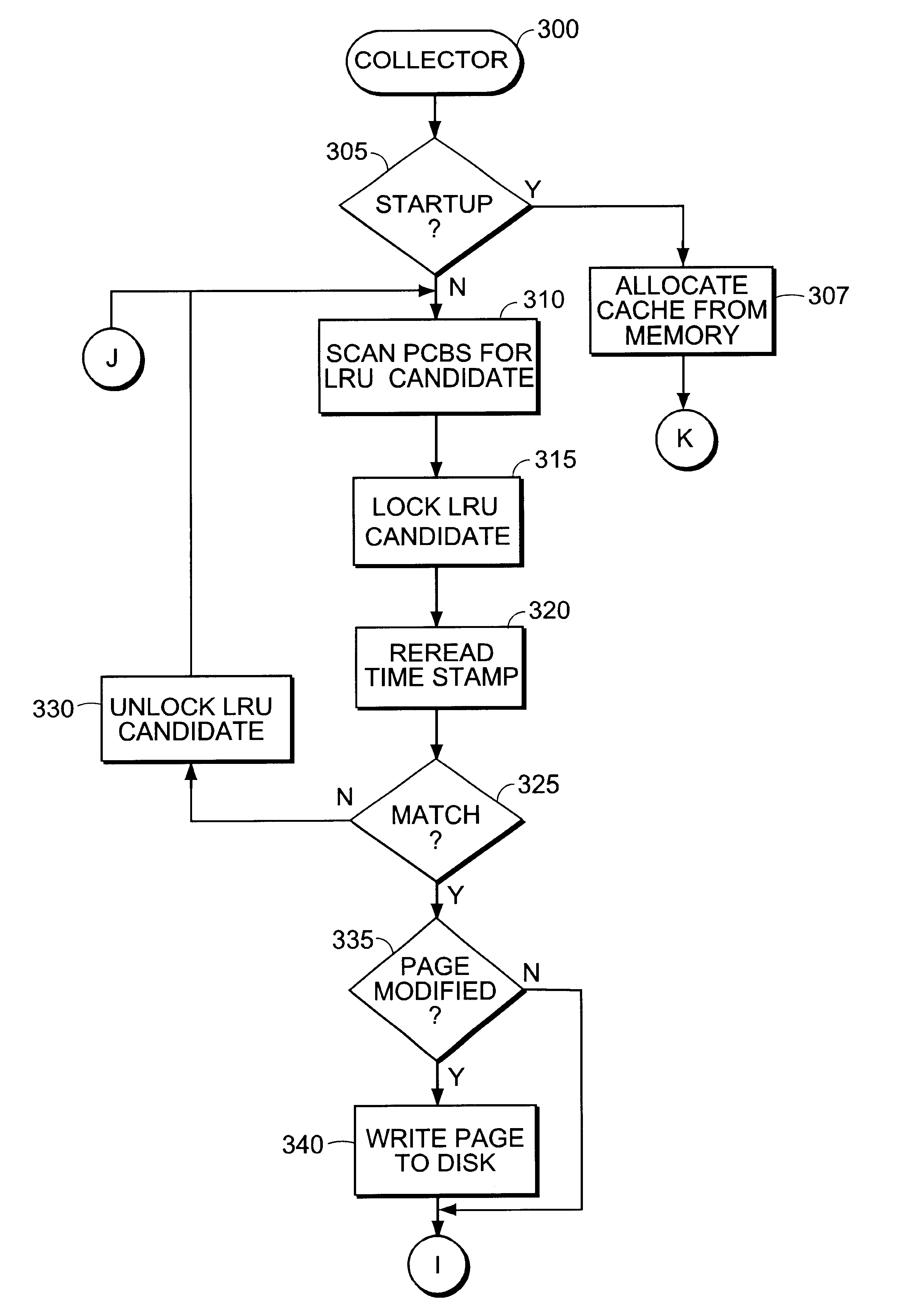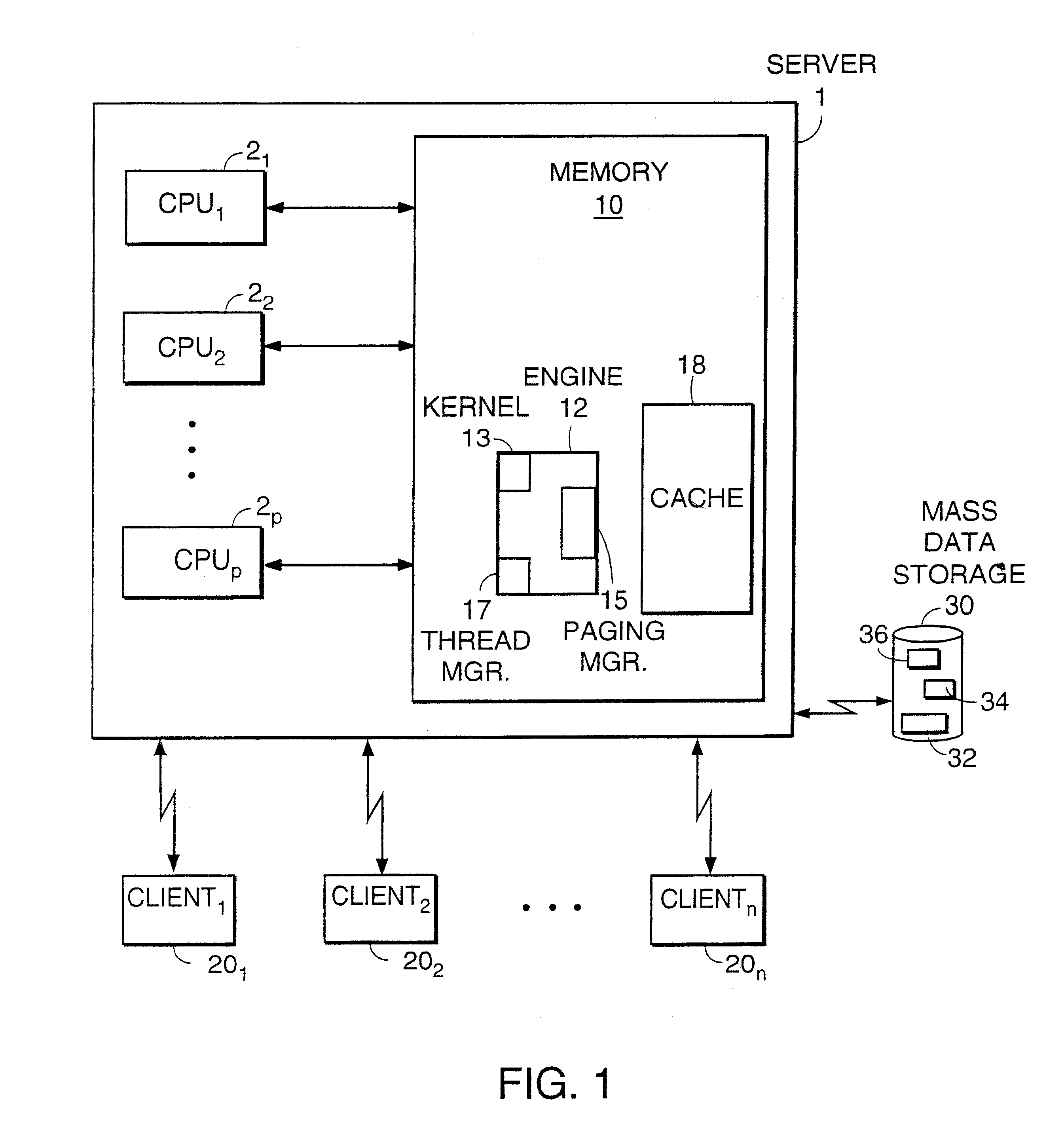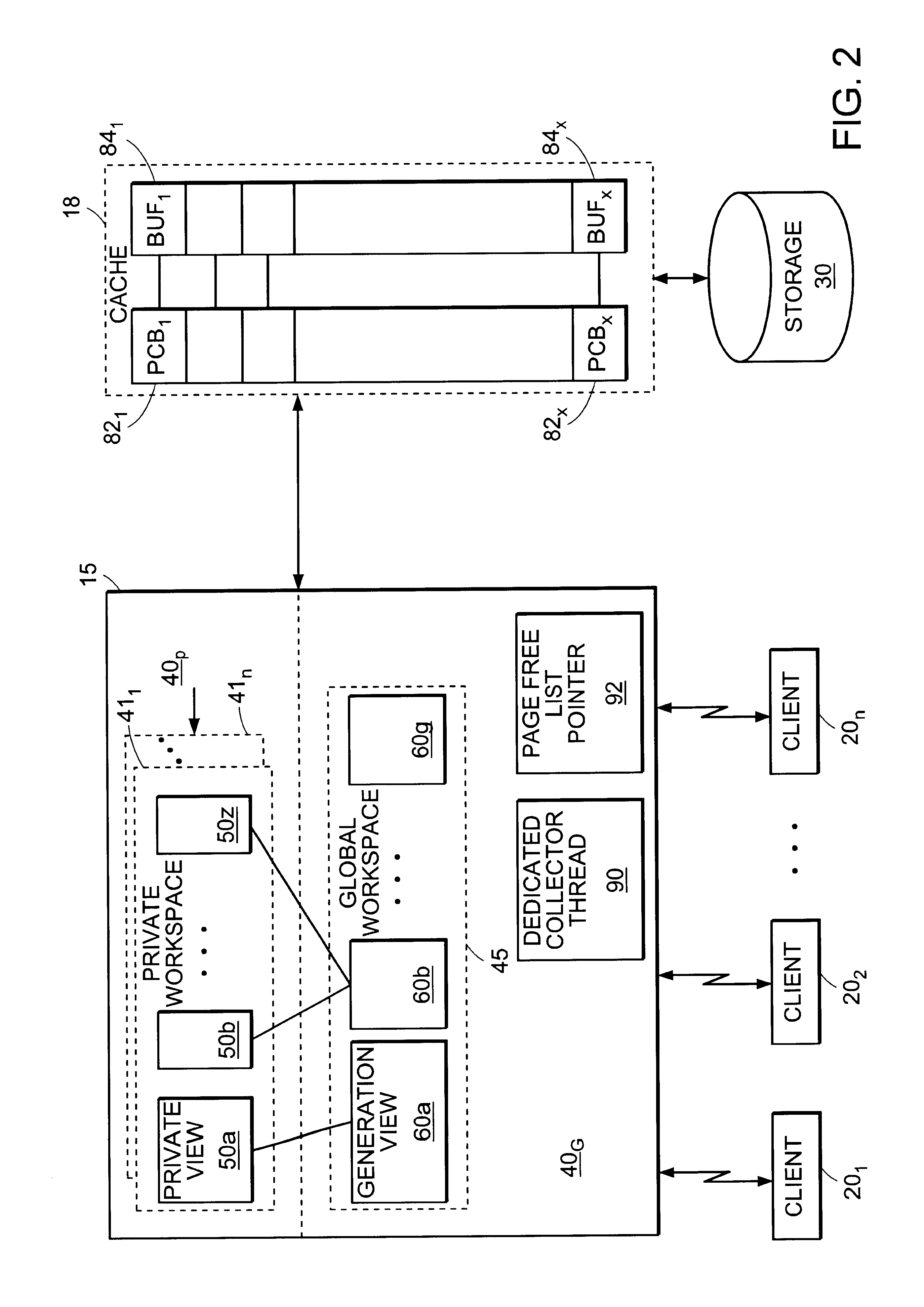System for maintaining a buffer pool
a buffer pool and buffer technology, applied in the field of buffer pool maintenance systems, can solve problems such as inappropriate access through public view, and achieve the effects of avoiding potential deadlock, reducing memory requirements, and avoiding potential deadlock
- Summary
- Abstract
- Description
- Claims
- Application Information
AI Technical Summary
Benefits of technology
Problems solved by technology
Method used
Image
Examples
Embodiment Construction
FIG. 1 is a schematic block diagram of an on-line analytic processing (OLAP) system embodying the invention. A server 1 responds to requests from a plurality of client users 201, 202, . . . , 20n. To satisfy client requests, the server 1 retrieves data from a data storage warehouse 30, which can include various databases, such as relational databases 32, multi-dimensional databases 34 and temporary databases 36 stored on disk.
The server 1 includes at least one central processing unit (CPU) 21, 22, . . . , 2p. The CPUs 2 execute client or user sessions and system management processes to operate on data stored in memory 10, which includes an OLAP engine 12 and a cache memory 18. The OLAP engine 12 includes a kernel 13, a paging manager 15 and a thread manager 17. The user sessions can execute paging manager instructions, including page transfer functions (not shown), to manage pages in memory 10.
The user sessions and system management processes can include processing threads managed b...
PUM
 Login to View More
Login to View More Abstract
Description
Claims
Application Information
 Login to View More
Login to View More - R&D
- Intellectual Property
- Life Sciences
- Materials
- Tech Scout
- Unparalleled Data Quality
- Higher Quality Content
- 60% Fewer Hallucinations
Browse by: Latest US Patents, China's latest patents, Technical Efficacy Thesaurus, Application Domain, Technology Topic, Popular Technical Reports.
© 2025 PatSnap. All rights reserved.Legal|Privacy policy|Modern Slavery Act Transparency Statement|Sitemap|About US| Contact US: help@patsnap.com



